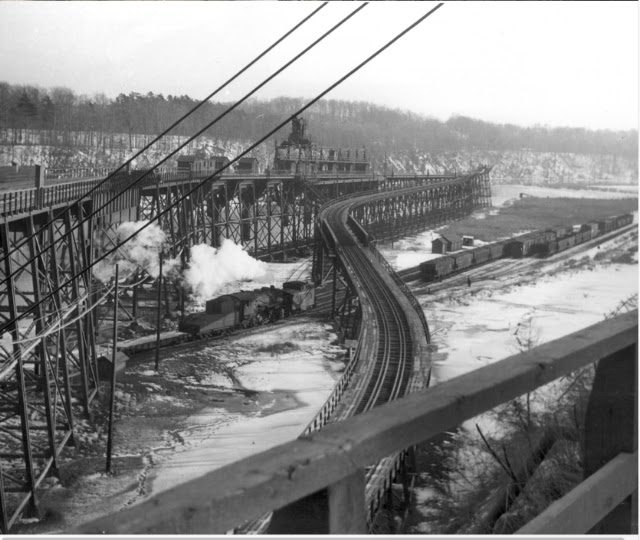 |
| New York Central "Niagara" #6003 |
These engines featured a 14-wheel "pedestal" (PT) or "centipede" style tender which carried 18,000 gallons of water and 46 tons of coal. Like other high-speed New York Central steam power, the Niagaras were equipped to scoop water on-the-fly from long pans set within the rails. The S1s had roller bearings on all axles and also on the side rods and Baker valve motion.
They were designed to accept either 75-inch or 79-inch driving wheels depending on their projected usage. The first example, S1a No. 6000, came with the smaller drivers as a "dual service" locomotive to satisfy requirements of the War Production Board, but the 25 engines of the S1b class that followed all came with the larger drivers intended for passenger service, and No. 6000 was also converted to the 79-inch size. (Larger driving wheels mean the locomotive is capable of faster speeds, but tractive effort is reduced.)
The Niagaras had a boiler pressure of 275 pounds per square inch, 25½x32-inch cylinders, and a tractive effort of 61,570 pounds. Their trailing truck supported a firebox with 101 square feet of grate area. This, combined with an evaporative heating surface of 4,819 square feet, produced about 6,000 horsepower at 40 miles per hour, the equivalent at that time of four diesel units. The S1s were fitted with a diesel-like air horn as well as a steam whistle, which sometimes fooled photographers lying in wait for a shot of this relatively short-lived breed of iron horse.
Niagaras were last used east of Buffalo on mail and express trains until August, 1953, after which they were used on the New York Central in the Midwest. By mid-1956 they had all been sold for scrap.



